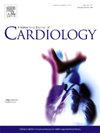Feasibility and safety of ketamine for procedural sedation in pediatric patients undergoing electrophysiology procedures: A cohort study
IF 3.2
2区 医学
Q2 CARDIAC & CARDIOVASCULAR SYSTEMS
引用次数: 0
Abstract
Introduction
Electrophysiology (EP) procedures in the pediatric population are often performed aided by anesthetic support under general anesthesia (GA), provided they require a delicate balance between appropriate sedation depth, analgesia, immobility, and hemodynamic stability. GA is still the standard of care but shows several limitations. Ketamine sedation (KS) offers an alternative to GA with preserved respiratory and cardiovascular function, yet its role in pediatric EP procedures remains understudied.
Methods
We retrospectively included 217 consecutive pediatric patients (<18 years) who underwent their first EP procedure at our center between 2016 and 2024. Patients received either KS (n = 37) or GA (n = 180) based on anesthesiologist and cardiologist preference. Primary endpoints were the GA conversion rate, perioperative complications, “door-to-door” operating room occupation time and postprocedural recovery time. Secondary endpoints included results of the electrophysiology study (EPS), change in electrocardiography parameters before, during and after drug infusion and difference of vital signs behavior between the two groups. Propensity score matching (PSM) was performed to correct for age, body mass index (BMI), type of procedure and sex.
Results
Before PSM, compared with the GA group, the KS cohort was older (mean age 13.5 ± 4.5 vs. 11.3 ± 3.2 years in GA; p = 0.02), while sex distribution and BMI were similar. After PSM, there were no significant differences between the tested variables. No KS patient required GA conversion or experienced complications (e.g., emergence delirium). Shorter operating room door-to-door occupation time (KS 79.3 ± 47.2 min; p = 0.0026 vs GA 100.8 ± 37.2 min) and shorter recovery room time were reported in the KS group compared to the GA group (15 ± 19 min vs 41.5 ± 14 min; p = 0.001).
No significant differences in the EPS result was observed between the two groups (19.4 % vs. 22.7 %; p = 0.59). In KS patients, electrocardiographic parameters remained stable before, during and at the end of procedure.
Conclusions
Ketamine-based sedation is a safe and effective alternative to GA for pediatric EP procedures, maintaining hemodynamic and electrocardiographic stability. Moreover, KS enhances operating room efficiency by reducing both periprocedural and recovery times.

氯胺酮在接受电生理手术的儿科患者中应用程序性镇静的可行性和安全性:一项队列研究。
儿童人群的电生理(EP)手术通常在全身麻醉(GA)下辅助麻醉支持下进行,前提是他们需要在适当的镇静深度、镇痛、不动和血流动力学稳定性之间取得微妙的平衡。GA仍然是标准的护理,但显示出一些局限性。氯胺酮镇静(KS)提供了一种全身麻醉的替代方法,保留了呼吸和心血管功能,但其在儿科EP手术中的作用仍有待研究。方法:我们回顾性纳入217例连续的儿科患者(结果:PSM前,与GA组相比,KS队列年龄较大(GA组平均年龄13.5 ± 4.5岁比11.3 ± 3.2 岁;p = 0.02),性别分布和BMI相似。PSM后,被测变量间无显著差异。无KS患者需要GA转换或出现并发症(如突发性谵妄)。手术室上门占领时间短(KS 79.3±47.2 分钟;p = 0.0026 vs 100.8 GA ±37.2 min)和恢复室时间短报道KS集团相比遗传算法组(15 ± 19 分钟41.5 vs ± 14分钟;p = 0.001)。两组间EPS结果无显著差异(19.4 % vs. 22.7 %;p = 0.59)。在KS患者中,心电图参数在手术前、手术中和手术结束时保持稳定。结论:氯胺酮为基础的镇静是一种安全有效的替代GA的儿科EP手术,保持血流动力学和心电图的稳定性。此外,KS通过减少围手术期和恢复时间来提高手术室效率。
本文章由计算机程序翻译,如有差异,请以英文原文为准。
求助全文
约1分钟内获得全文
求助全文
来源期刊

International journal of cardiology
医学-心血管系统
CiteScore
6.80
自引率
5.70%
发文量
758
审稿时长
44 days
期刊介绍:
The International Journal of Cardiology is devoted to cardiology in the broadest sense. Both basic research and clinical papers can be submitted. The journal serves the interest of both practicing clinicians and researchers.
In addition to original papers, we are launching a range of new manuscript types, including Consensus and Position Papers, Systematic Reviews, Meta-analyses, and Short communications. Case reports are no longer acceptable. Controversial techniques, issues on health policy and social medicine are discussed and serve as useful tools for encouraging debate.
 求助内容:
求助内容: 应助结果提醒方式:
应助结果提醒方式:


